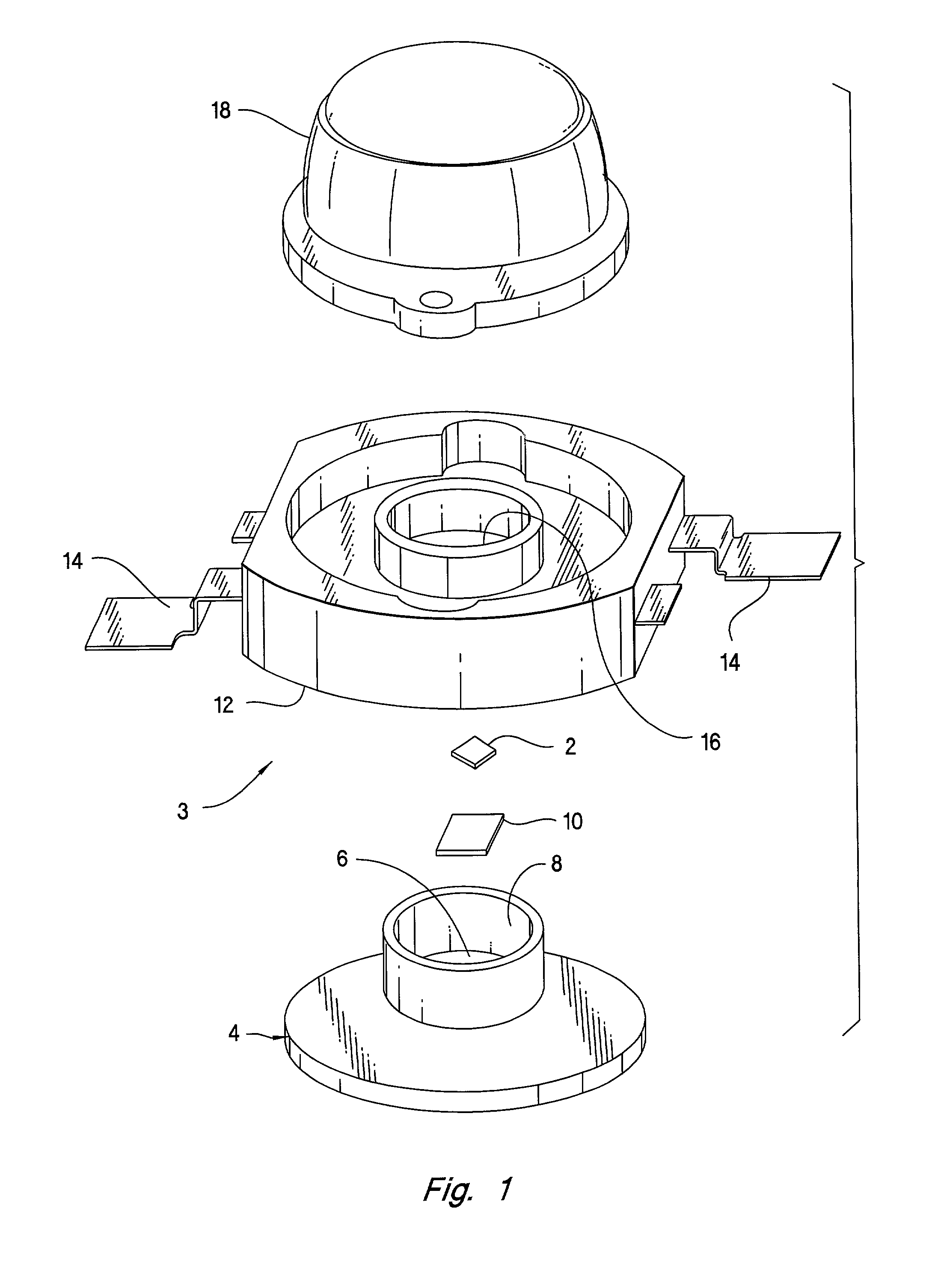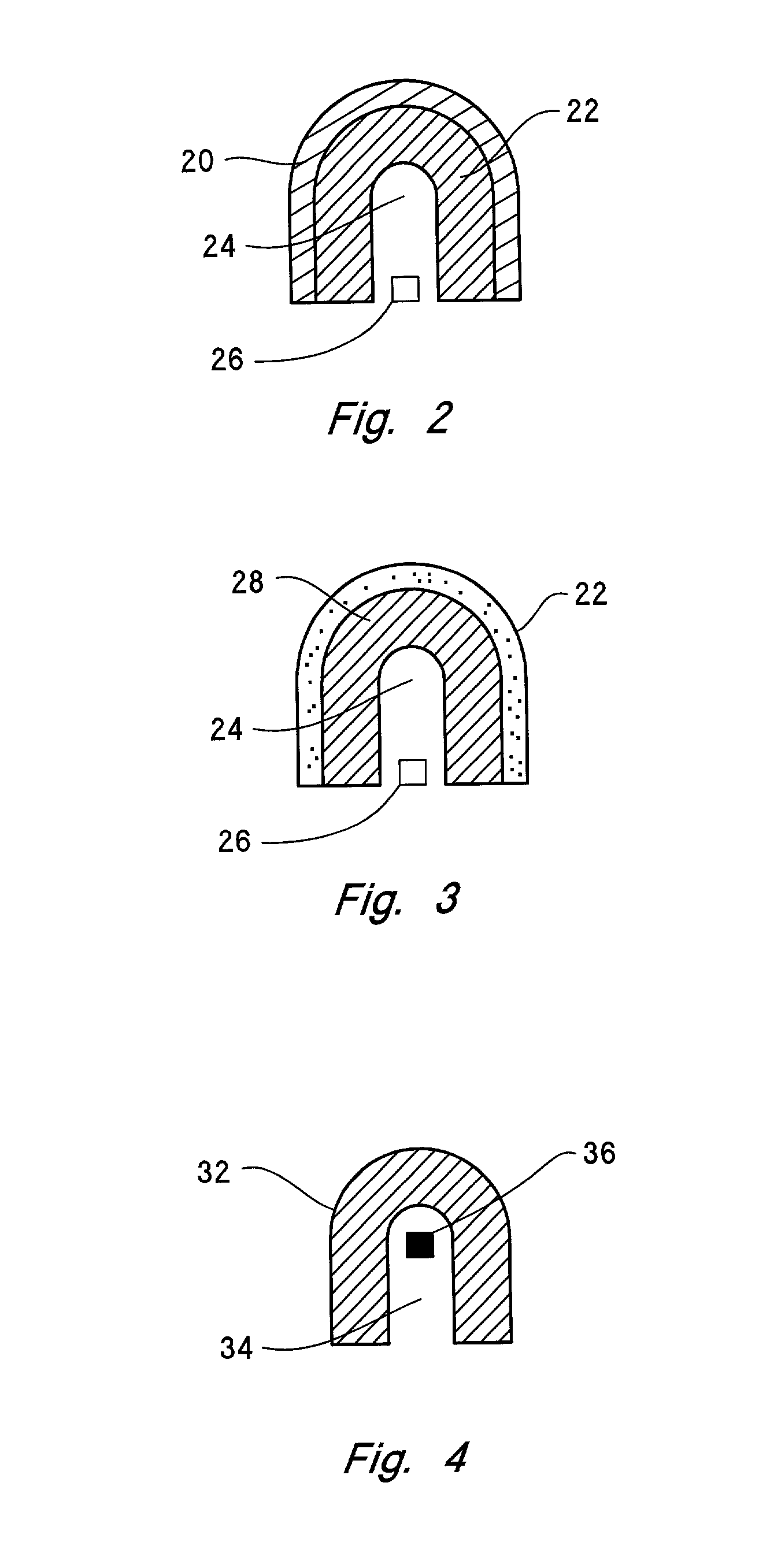High stability optical encapsulation and packaging for light-emitting diodes in the green, blue, and near UV range
a technology of optical encapsulation and packaging, which is applied in the direction of basic electric elements, electrical apparatus, semiconductor devices, etc., can solve the problems of reducing light output, reducing the design reducing the efficiency of the diode, so as to achieve the effect of reducing the degree of yellowing attenuation and reducing the cos
- Summary
- Abstract
- Description
- Claims
- Application Information
AI Technical Summary
Benefits of technology
Problems solved by technology
Method used
Image
Examples
first embodiment
[0036] FIRST EMBODIMENT--FIG. 2
[0037] FIG. 2 is a cross-sectional view of an LED optically transmissive cover structure, in accordance with a first embodiment of the invention.
[0038] Since it is common for LED covers to be shaped as lenses, the shape is given as a convex dome. Other shapes, however, will be known to those skilled in the art. Also, the position of the LED die is indicated, but it will be understood that leads and a suitable bed arrangement are also provided.
[0039] FIG. 2 shows an LED cover configured as per a first preferred embodiment of the invention. A hard outer shell 20 is suitably shaped, e.g., as a lens. The shell may be made of any suitable optically transmissive material, preferably a stable material such as cyclic-olefin copolymers or other optical plastics, glasses, ceramics, or other transparent materials such as Aluminum Oxide.
[0040] Inside the shell 20, a quantity of softer, resilient material 22 is provided. In accordance with the invention, the materi...
second embodiment
[0042] SECOND EMBODIMENT--FIG. 3
[0043] In the second embodiment of the invention, shown in FIG. 3, an LED die 26 (in the green-to-near UV wavelength range) is disposed inside a space 24, as before. Surrounding the LED die 26 is a structure including a hard outer shell and a softer interior. The interior is again a quantity of silicone material 28, such as a gel, similar to the material 22 of FIG. 2.
[0044] In this case, however, there is an outer shell 30 made of silicone material. Preferably, the outer shell 30 is a harder, more rigid silicone formulation than that of the material 28, to give the desired rigidity and structural integrity to the LED component.
[0045] Since the optically transmissive cover of FIG. 2 is entirely silicone material, it provides further advantageous freedom from yellowing attenuation.
third embodiment
[0046] THIRD EMBODIMENT--FIG. 4
[0047] In yet another embodiment of the invention, the optically transmissive cover includes only a single layer of material.
[0048] As shown in FIG. 4, a cover made of a single, thick layer 32 of silicone material surrounds a cavity 34, in which an LED die 36 is disposed.
PUM
 Login to View More
Login to View More Abstract
Description
Claims
Application Information
 Login to View More
Login to View More - R&D
- Intellectual Property
- Life Sciences
- Materials
- Tech Scout
- Unparalleled Data Quality
- Higher Quality Content
- 60% Fewer Hallucinations
Browse by: Latest US Patents, China's latest patents, Technical Efficacy Thesaurus, Application Domain, Technology Topic, Popular Technical Reports.
© 2025 PatSnap. All rights reserved.Legal|Privacy policy|Modern Slavery Act Transparency Statement|Sitemap|About US| Contact US: help@patsnap.com


